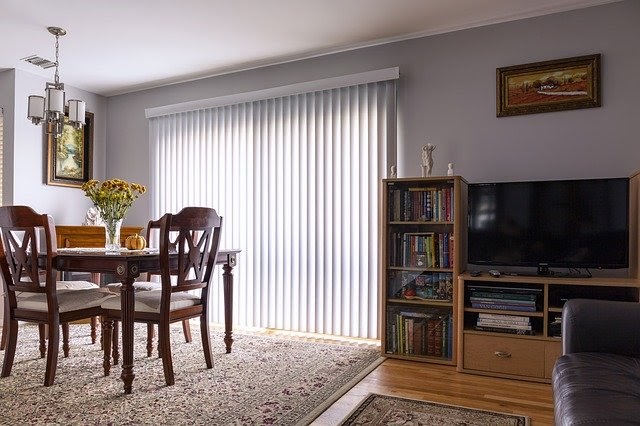A Home Guide: All You Need To Know About The Window Treatments
Do you know about window treatment? What window treatments are there and what do they do? Window treatment has a lot of different kinds, some of which filter sunlight while others help to insulate your home. There are also window treatments that can be used to control privacy in the room! If you want to know more about window treatments, read on for our guide!
Window Treatments 101
The first thing you need to know about window treatments is that they’re not just for decoration. They are for your home, the climate, and/or light conditions in your home as well! Basically, window treatment is a solution to window problems.
Let’s say you’re experiencing a glare on your window from the sun, or that the house is too dark with morning light streaming in through the window. The answer is window treatment! There are so many types of window treatments and they come in different styles as well. You can find blinds, shades (also called roller shades), shutters, curtains, valances, and even screens for doors and windows if needed!
For example: Say you want one eye-catching curtain panel draping across an entire wall instead of just above a window? All it takes is four panels sewn together at varying lengths to create this style.
Or maybe you need some privacy but not total darkness? Blinds might be the way to go. You can find window treatments in all different colors, fabrics, and textures too!
The Basic Types of Window Treatments
The types of window treatments are endless. You have your traditional curtains, roman shades, and blinds. You can also find window film window coverings which come in a number of designs that make them look like they’re made out of fabric or wood.
The type of window treatment is usually determined by the design on the windows themselves: if there’s no formal patterning to the glass, then it might be best to go with something simpler like curtains or a valance, but if the window has intricate detailing (such as etched patterns), then maybe consider going for something more decorative like paneled shutters.
- Window Treatments
- Window Film
- Curtains
- Valances
- Roman Shades
- Blinds
- Shutters
- Decorative window film
- Paneled Shutters
- Roll-Up Blinds
- Room Darkening Shades
- Movable Window Screens
- Tapered Roller Shades
- Vertical and horizontal Venetian blinds
No matter what type of window treatment you’re interested in, it’s important to measure your window first before buying anything! The last thing you want is for something not fitting correctly or being too small (or large) on the window.
DIY Tips and Tricks for Installing Blinds or Shades on Windows in Your Home
Installing blinds or shades on your windows in your home is a great DIY project for the weekend. It’s an easy way to quickly and inexpensively add style, privacy, and warmth to any room in your house. If you know what kind of light you want, but are unsure what to pick, click here for some ideas on that. Once you know what you need, the next step is to measure your windows.
Putting these things on shouldn’t be a difficult job – especially if you have blinds or shades already. But, there are some things to know before you start so that the end product is perfect for your space.
Curtains
Caring for your curtains is easy and doesn’t have to be time-consuming. Gently vacuum curtains once a month with the upholstery attachment of your vacuum cleaner, using short strokes with even pressure. If they are made from synthetic fibers (such as polyester), use only cool water on them when laundering them. Never use hot water or bleach, don’t wring curtains out but lay them flat on a towel instead. Allow curtains to air dry away from direct sunlight.
Hang curtains in the morning light for at least two hours every day if possible so they will stay fresh smelling and looking their best longer.
How to Choose the Right Window Treatment For You and Your Space
There are multiple factors to take into account when you’re window shopping for window treatments. You need to think about the design of your home, how much light is allowed in (e.g., do you want privacy or just natural light?), and what kind of look and feel are most appealing to you. For instance, if there’s no room on either side of a window that needs covering then it may be best to go with curtains rather than drapes so as not to obstruct visibility. If you have plenty of space around the window, choose something fun like sheer white linen panels. Or maybe instead opt for whimsical burlap gingham curtains that match your window seat.
Now that you know about the different options and how to choose window treatments, it’s time for a shopping excursion!
So there you have it, a quick and easy guide to the basics of window treatments. If you’re thinking about adding new blinds or shades for your windows in your home but are feeling overwhelmed by all the options out there, take heart! This post has hopefully given you some helpful guidelines to help make that decision more manageable. Good luck whatever you choose!





